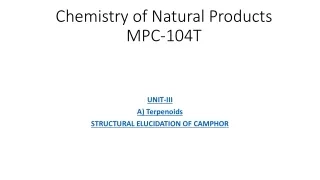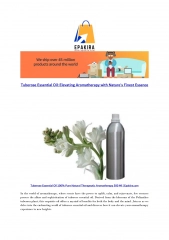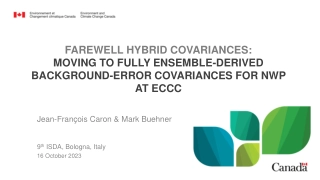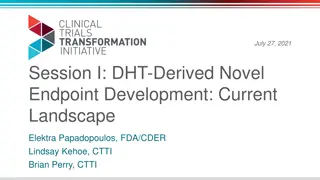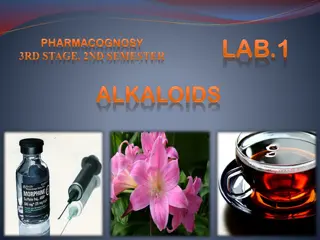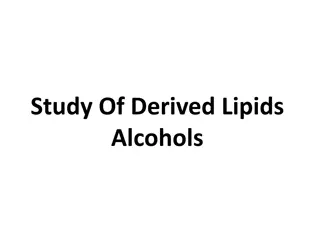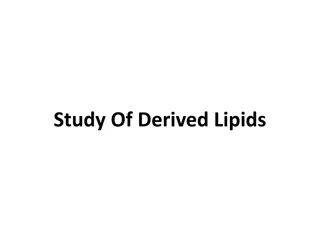Ru(II) Dyads Derived from 2-(1-Pyrenyl)-1H-imidazo[4,5-f][1,10]phenanthroline: Versatile Photosensitizers for Photodynamic Applications
Versatile photosensitizers, such as Ru(II) dyads, offer localized cytotoxicity with rapid cellular destruction for photodynamic therapy. They exhibit advantages like minimized collateral damage and reduced resistance but face challenges like photobleaching and poor aqueous solubility. Metal complexes enable photochemistry with a wider range of light wavelengths, providing varied excited state configurations. The synergy of organic chromophores with metal complexes extends excited state lifetimes, with some reports of lifetimes exceeding 150 seconds. Research has explored the enhancement of 3IL states' lifetimes, showcasing potential in optimizing photosensitizer properties for diverse applications. Despite the benefits, issues like non-matching light absorption wavelengths and tissue retention persist.
Download Presentation

Please find below an Image/Link to download the presentation.
The content on the website is provided AS IS for your information and personal use only. It may not be sold, licensed, or shared on other websites without obtaining consent from the author.If you encounter any issues during the download, it is possible that the publisher has removed the file from their server.
You are allowed to download the files provided on this website for personal or commercial use, subject to the condition that they are used lawfully. All files are the property of their respective owners.
The content on the website is provided AS IS for your information and personal use only. It may not be sold, licensed, or shared on other websites without obtaining consent from the author.
E N D
Presentation Transcript
Ru(II) Dyads Derived from 2-(1-Pyrenyl)- 1H-imidazo[4,5-f][1.10]phenanthroline: Versatile Photosensitizers for Photodynamic Applications Raymond Twumasi
Photosensitizers Therapeutic agents and diagnostic tools Utilize light as an external trigger for temporal and spatial selectivity in various applications PDT and PDI 2 http://photobiology.info/Oleinick.html
Advantages Minimization of collateral damage Localized and immediate burst of cytotoxic agents Rapid cellular destruction Less chance for resistance 3 Periodontology 2000 2011, 55, 143-166
Disadvantages Tendency to photobleach Poor aqueous solubility Prolonged retention in tissues 4 Dalton Trans. 2009, 10690 10701
Organic PSs vs Metal Complexes Capable of photochemistry with wider breadth of wavelengths of light Metal complexes have a variety of excited state configuration MLCT, MC, LC, IL, ILCT, MMCT Combinations Low-lying 3IL excited states 5 Isr. J. Chem. 2013, 53, 391 400
Other work in field Wrighton and coworkers: Organic chromophores + metal complexes = extend excited state lifetimes Ford & Rogers applied this concept to Ru(II) complexes Lifetimes above 150 s have been reported for pure 3IL states. 6
Previous work 3IL states with lifetimes as long as 240 s (from 22 s) 5-(puren-1-ylethynyl)-1,10- phenantholine (5-EPP) 7 JACS. 2013, 135, 17161 17175
Problem Blue/green-absorbing PSs can be activated despite no absorption of light at these wavelengths 8 Inorg. Chem. 2014, 53, 4548 4559
10 J. Phys. Chem. A 2014, 118, 10507 10521
Results UV Vis 11 J. Phys. Chem. A 2014, 118, 10507 10521
Results Resonance Raman Recorded at 458, 476, 488 nm In order to confirm MLCT transition involved ippy 12 J. Phys. Chem. A 2014, 118, 10507 10521
Compounds 1-4 were weakly emissive Compound 2 was most red-shifted and compound 1 was least Emission resolved into two components 1 and 2 13
Electronic absorption signatures Dyads are weakly coupled systems with distinct chromophores 3MLCT state can exist in equilibrium with 3IL state of ippy Decay via a double exponential process 1MLCT 3MLCT 3IL 14 1Ground state
Emission decay kinetics Biexponential decay kinetics also observed in water 2 plays more important role in excited state quenching by O2 High O2 quantum yields attributed to 3IL Potent photobiological agents for PDT 15
Absorption titration - DNA binding Binding constant (Kb): nonintercalating metal complex [Ru(phen)3]2+ is 1.65 x 104 M-1 intercalating complex [Ru(phen)2dppz]2+ is >10 M-1 16
Photodynamic Activity Nanomolar light toxicities and PIs > 100 Highly photosensitizing excited states Such potency typical for low-lying 3IL states or 3IL-3MLCT equilibrium mixtures 17
Conclusion Ru(II) dyads containing ippy can be used to achieve highly photosensitizing states Common factor among dyads is low- lying, long-lived 3IL state High light cytotoxicity against both cancer and bacteria cells Dark toxicities influenced by ancillary ligands 18
Questions? 19
![Ru(II) Dyads Derived from 2-(1-Pyrenyl)-1H-imidazo[4,5-f][1,10]phenanthroline: Versatile Photosensitizers for Photodynamic Applications](https://cdn1.slideorbit.com/303996/ru-ii-dyads-derived-from-2-1-pyrenyl-1-h-imidazo-n.jpg)

